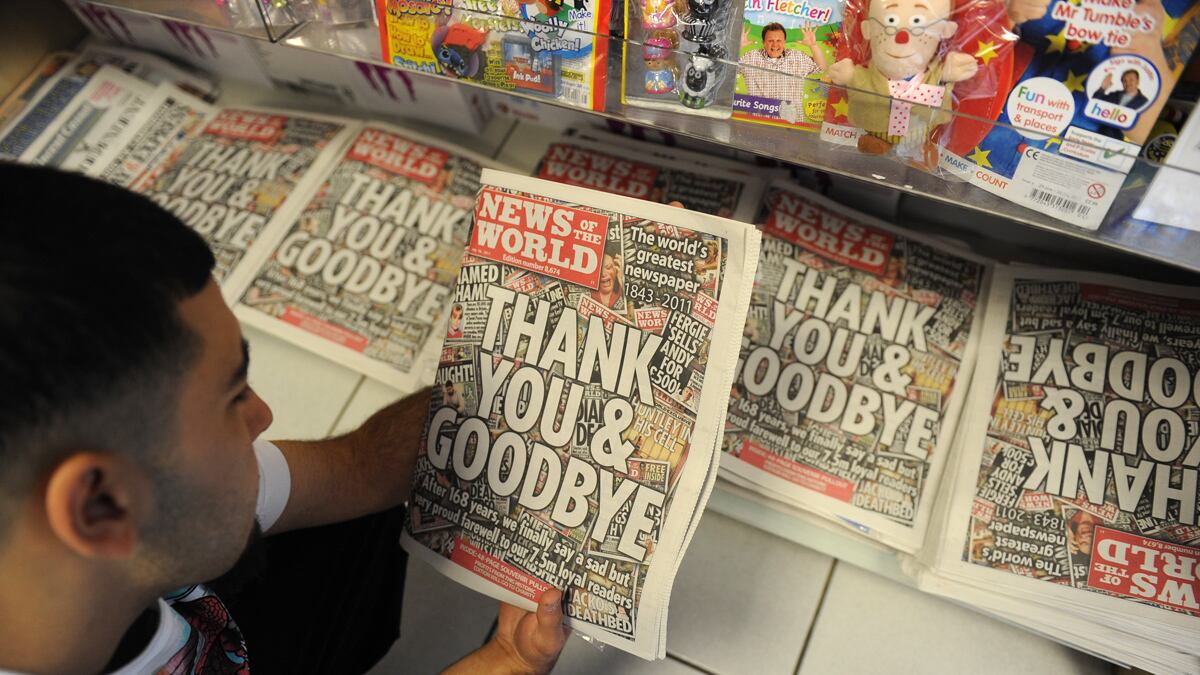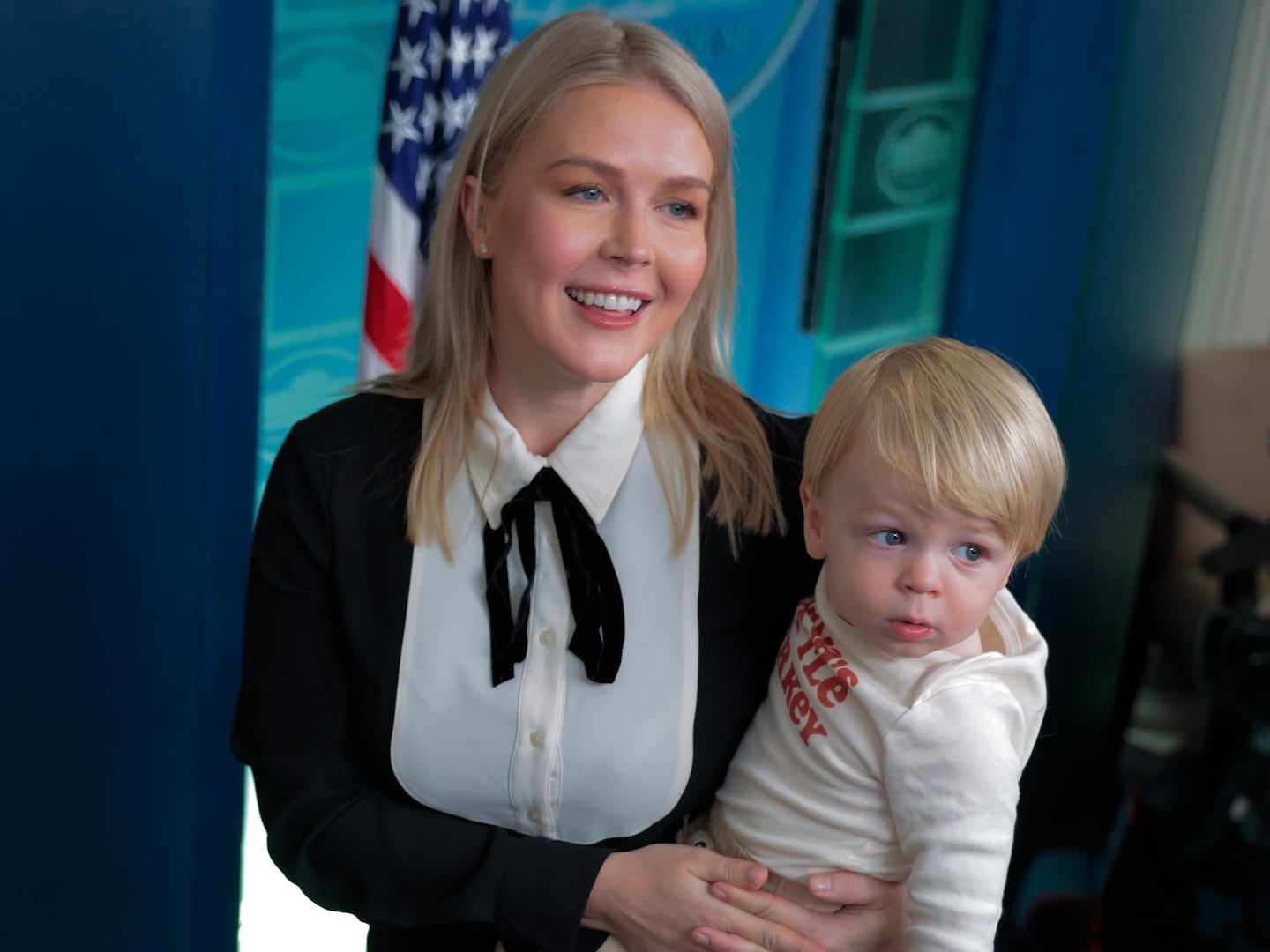The final edition of disgraced British tabloid News of the World was selling like hotcakes across Britain this morning, with still more copies being hawked as “souvenir” papers on Ebay at five times the £1 cover price.
By 8:30 a.m. local time, all five newspaper stores on one West London street had sold out of the tabloid, while at a bustling train-station newsstand in nearby Hammersmith, a rival news seller snatched up 10 remaining copies. The competitor’s manager had already sent him out three times in search of fresh papers.
Outside, Londoner Bryan Butler, who snagged a copy, said he had read the paper every Sunday for 30 years. “Obviously I’ll miss it, for the sport—it’s the best sports of all the papers,” said Butler. “And for the routine.”
Did his parents read it, too?
“Everybody reads the News of the World,” he said.
Shuttered by its owner Rupert Murdoch amid a relentless scandal that continues to threaten the media titan’s empire, the 168-year-old newspaper was a fact of life for millions.
Kelly Bradford, 37, a London-based journalist, remembers sneaking a read of her dad’s copy each Sunday. “It was the newspaper that got me interested in journalism,” she says, though she never wrote for it. As an adult she was a “newsagent reader,” leafing through copies at newsstands before buying the more refined Sunday Telegraph.
“It was a bit illicit, a bit naughty,” she said. “They had big splashes and risque stories. I saw those big stories that no one else was getting in the 80s. Nobody did those stories when they did.”
Such controversial scoops included news of Prince Andrew’s dalliance with a model and author Jeffrey Archer’s attempt to cover up an adulterous holiday affair.

Another reader, stuffing a copy into his back pocket outside a West London cafe while accompanying his dog on an early morning walk, put it this way: “Yeah, I always get the ‘News of the Screws.’ Where am I going to read about a high court judge caught pants down with a rent boy?”
U.S. readers might think of News of the World as something between the National Enquirer and a popular daily. The tabloid offered titillation, sexism, and bigotry of many stripes, coupled with a maudlin sentimentality for children (tots) and a patriotic fervor for members the armed forces (our boys). Oh, and puns galore.
These traits were hardly confined to News of the World, but the paper was the grandfather and standard-bearer of the British tabloid movement, outselling all competitors with a circulation of 2.6 million. First published the same year as Charles Dickens’s A Christmas Carol, the paper acquired the motto: “All human life is there.”
In a scene from British 60s-set cult movie classic Withnail and I, the protagonist wonders, while glancing up from his breakfast at a copy of the paper: “Thirteen million Londoners have to wake up to this. The murder and all-bran and rape?”
Good or bad, it was an institution. Writing in Britain’s Guardian, News of the World political editor David Wooding deemed the loss “a bombshell like the break-up of the Beatles, the collapse of Woolworths and the end of Concorde.”

The paper’s final cover declared: “The world’s greatest newspaper 1843-2011.” Whether or not this can be rightly claimed in a qualitative sense, it is undeniably true if taken to refer to its sheer size: the paper has been unmatched for distribution among Sunday papers for decades. The bumper issue includes a 48-page “souvenir” pullout on the paper’s history, alongside swan-song columns from the major contributors.
Among its recent conquests, the paper hounded senior Conservative party politician David Mellor out of office for kinky sexual acts with a little-known actress (“From toe job to no job,” ran the headline), published the names of addresses of Britain’s registered pedophiles (“named and shamed”), and ran details of Princess Diana’s affair, gleaned from illicit recordings (dubbed “Squidgygate” for the pet name Diana’s lover called her).
In a trademark juxtaposition of hard and soft news, James Murdoch’s announcement of News of the World’s demise appeared first on its website late Thursday, right next to a pervy underwear shot of Victoria’s Secret model Rosie Huntington. (The younger Murdoch, Rupert’s fourth son, is chair and CEO of News Corp.’s European and Asian properties.) Below that was a story on the star of the now-cancelled Bionic Woman, Michelle Ryan, headlined “Michelle’s huge parts”—which, in a series of puns, referred to both the actress’s new movie roles and her large breasts.
The tabloid’s crimes were not entirely shocking: that the paper—whose lead investigative reporter, Mazher Mahmood, impersonated an Arab sheik to get many of his biggest scoops—had illegally accessed the voicemails of celebrities seemed to some simply part of the game.
But this week it emerged that the newspaper had broken not only the law but also several of its own golden rules by targeting the troops and children. Its reporters had hacked the phones of relatives of dead soldiers, and the phone of Milly Dowler, a missing schoolgirl. The reporters deleted voicemails and, in the process, convinced the 13-year-old’s parents into thinking, mistakenly, that she was still alive.
The paper conceded that it “lost its way” and pledged that all revenue from its final issue—which saw a print run of 5 million copies—would go to charity. But it didn’t stop angry detractors from taking to Twitter and Facebook to demand a boycott of the final issue. “Try imagining that the parents of those murdered girls or soldiers are behind you in the queue,” admonished one enraged tweeter.
And it won’t stop Murdoch from picking up a copy. The now-defunct paper’s owner flew to London today to face fresh allegations in the hacking scandal. A small mercy for the media baron? At least there’s one less tabloid to cover the fallout.






